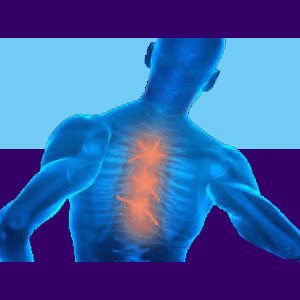
Pain between the shoulders is a common characteristic of many upper back pain syndromes. Centralized upper thoracic or lower cervical pain can come about from many possible causative conditions and may influence the strength of the shoulders to a large degree. It is typical for patients who suffer from shoulder blade pain to endure reduced functionality in one or both arms and also a limited range of motion in the neck.
Shoulder pain may be bilateral, unilateral or truly centrally located. It may be muscular or neurological in nature or might even be the result of a completely nonstructural process, such as chronic tension. The only universality of back, neck and shoulder symptoms is that they make life so uncomfortable and limited for every affected victim.
This essay provides a complete view of symptomatic expressions experienced in between the shoulders.
Thoracic Outlet Pain Between the Shoulders
A common diagnosis for symptoms which exist between the shoulder blades is thoracic outlet syndrome. This specific diagnosis is used to explain mostly neurological pain from compression of nerve structures in the brachial plexus.
The brachial plexus is composed of nerves which originate from the C5, C6, C7, C8 and T1 vertebral levels. Occasionally, vascular tissue is also implicated in TOS, involving the subclavian artery or subclavian vein. TOS is a diagnosis on the rise, which is not surprising, since nerve pain is a very profitable medical specialty to treat.
Most actual cases of thoracic outlet seem to involve either congenital abnormalities in the scalene musculature or traumatic injury to these same structures. These varieties respond best to targeted treatment. Other less specific versions of theorized TOS might be misdiagnosed in many patients, based on poor curative results offered by an incredibly wide range of potential treatment options.
Shoulder Blade Pain from Injury
Upper back and neck injury can produce pain which either originates between the shoulder blades or radiates there. This type of pain is common after a sports injury or car accident. Rear end collisions are the most common causes of upper back and neck pain due to the considerable effects of whiplash.
While it is possible to injure the spinal structures from severe trauma, most cases of neck, back and shoulder pain are due to muscular damage. The neck and back muscles are very strong, but they are not invincible and some cases of back muscle pain might be truly agonizing. Luckily, most instances are not serious and should resolve in a few days to a few weeks, even without formal medical treatment.
Pain Between the Shoulders Alternatives
Other common causes of pain in the shoulder blades are poor posture, repetitive motion injuries and psychosomatic pain conditions. Tension myositis syndrome often targets this region, since pain here can be very miserable to endure. Many instances of misdiagnosed back pain exist in patients with upper back and shoulder pain. Remember, structurally-induced pain typically responds well to appropriate treatment and some cases of unresolved back pain are actually due to ischemia, not a spinal abnormality or ongoing muscular issue.
One of my major recurrent symptoms is burning pain which starts in the neck and radiates into the left or right shoulder scapula. I have suffered this injury twice in recent years and it has plagued me with virtually intolerable pain for months on both occasions. I am quite sure it is related to the plethora of herniated discs I demonstrate, since the first 10 in my vertebral column are all a complete mess! The strange thing is that the expression of pain is strikingly similar to what I always thought were muscular training injuries that I have experienced all my life from my beloved martial arts. Maybe these herniations have been there a very long time indeed and have simply become more symptomatic over time.
Back Pain > Combination Back Pain > Pain Between the Shoulders




